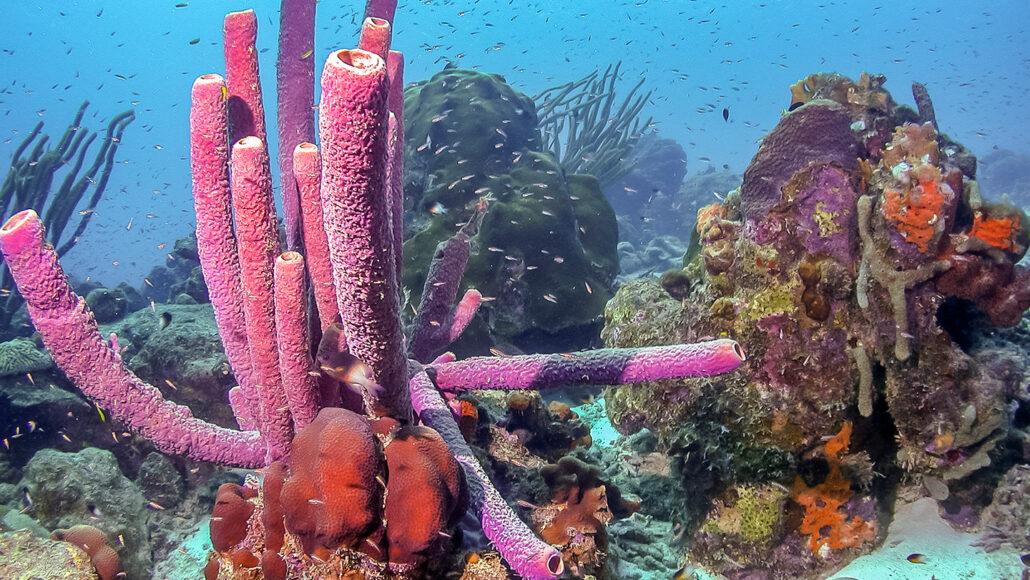biology: The study of living things. The scientists who study them are known as biologists.
Caribbean: The name of a sea that runs from the Atlantic Ocean in the East to Mexico and Central American nations in the West, and from the southern coasts of Cuba, the Dominican Republic and Puerto Rico down to the northern coasts of Venezuela and Brazil. The term is also used to refer to the culture of nations that border on or are islands in the sea.
crustaceans: Hard-shelled water-dwelling animals including lobsters, crabs and shrimp.
debris: Scattered fragments, typically of trash or of something that has been destroyed. Space debris, for instance, includes the wreckage of defunct satellites and spacecraft.
digest: (noun: digestion) To break down food into simple compounds that the body can absorb and use for growth. Some sewage-treatment plants harness microbes to digest — or degrade — wastes so that the breakdown products can be recycled for use elsewhere in the environment.
evolutionary biologist: Someone who studies the adaptive processes that have led to the diversity of life on Earth. These scientists can study many different subjects, including the microbiology and genetics of living organisms, how species change to adapt, and the fossil record (to assess how various ancient species are related to each other and to modern-day relatives).
footage: (in movies and videos) A term for the uncut or unprocessed motion pictures or video imagery taken by a camera. It takes its name from the fact that it took several feet of film to capture a few seconds of motion-picture photography.
habitat: The area or natural environment in which an animal or plant normally lives, such as a desert, coral reef or freshwater lake. A habitat can be home to thousands of different species.
Indo-Pacific: A merging of Indian and Pacific that refers to the tropical Indian Ocean and adjoining western and central parts of the Pacific Ocean.
marine biologist: A scientist who studies creatures that live in ocean water, from bacteria and shellfish to kelp and whales.
mucus: A slimy substance produced in the lungs, nose, digestive system and other parts of the body to protect against infection. Mucus is made mainly of water but also includes salt and proteins such as mucins. Some animals use mucus for other purposes, such as to move across the ground or to defend themselves against predators.
nutrient: A vitamin, mineral, fat, carbohydrate or protein that a plant, animal or other organism requires as part of its food in order to survive.
online: (n.) On the internet. (adj.) A term for what can be found or accessed on the internet.
particle: A minute amount of something.
pore: A tiny hole in a surface. On the skin, substances such as oil, water and sweat pass through these openings.
sea: An ocean (or region that is part of an ocean). Unlike lakes and streams, seawater — or ocean water — is salty.
sediment: Material (such as stones and sand) deposited by water, wind or glaciers.
species: A group of similar organisms capable of producing offspring that can survive and reproduce.
sponge: Something that sops up liquids or other materials and holds them until squeezed out or removed in some other way. (in biology) A primitive aquatic animal with a soft, porous body.
system: A network of parts that together work to achieve some function. For instance, the blood, vessels and heart are primary components of the human body's circulatory system. Similarly, trains, platforms, tracks, roadway signals and overpasses are among the potential components of a nation's railway system. System can even be applied to the processes or ideas that are part of some method or ordered set of procedures for getting a task done.









